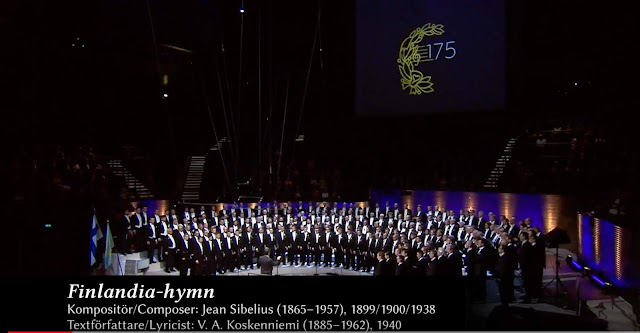“We, a Number of Spiritually
Sensitive Scholars
from East of Palestine, Are...”
A couple of aporetic questions have led to apocryphal answers...
Liisa Berg
Liisa Berg
"And when they were come into the house, they saw the young child with Mary his mother, and fell down, and worshipped him: and when they had opened their treasures, they presented unto him gifts; gold, and frankincense, and myrrh."
(Matthew 2:11)
<<<<*>>>
Not that art will lead us to truth and light—sometimes far from it—but it has been interesting to consider new “takes” on the Christmas Story by examining some masterpieces whose inspiration has flown from the Greatest Story Ever Told. (When I refer to artwork, it is not to look for evidence, just intellectual stimuli.) Fortuitously, there are some known facts that play a role here, too... I just find this very interesting.
“We three kings of Orient are...” might need to say “We a number of spiritually sensitive scholars from east of Palestine are...” These “distinguished foreigners” are better known as the Magi. Magi is the plural of magus, used since at least the 6th century BC, to denote followers of Zoroastrianism or Zoroaster. (But that’s another story.)
How many magi were there?
Traditionally, it is believed that there were three men, based on the number of gifts brought: gold, frankincence and myrrh. Perhaps there were only two or more than three, bringing communal offerings? (In Eastern Christianity, especially the Syriac churches, the Magi often number twelve.) If they were serving in the capacity of witnesses, there would of necessity have been two or more. (Parts collected from Bible Dictionary.)
Who were they?
Who these men were we are not told, but it is certain they were not ordinary men, but nowhere in the Gospels does it say that they were “kings.” That they were privileged to search out the Son of God and give Him gifts, and that they were spiritually sensitive and knowledgeable, suggest that they were actually prophets on a divine errand. The customary identification of them as astrologers is a gross misrepresentation. They evidently were holy men from a land east of Palestine. (Parts collected from Bible Dictionary.)
How did they travel?
Did three kings come to see Jesus riding camels? The Bible does not say that any kings or camels visited the young Jesus. Nor does it say that there were horses, though in many Medieval/Renaissance art pieces, horses accompany the magi more frequently than camels. (Those Arabian horses are well-known for their unmatched endurance riding.) (See artwork.)
However, in his Adoración de los Reyes Magos, El Greco (1541-1614) painted creatures that to me seem an odd mix of camels and horses. His assertion might have been that he believed the magi did travel by camels, but he added an unexpected "mutation" to their appearance. I don't know. The animals just look odd to me.
 |
| Adoración de los Reyes Magos, El Greco (1541-1614) This painitng also clearly shows that the manger is history and that the Holy Family is residing in a "house." |
When did they visit Jesus?
From the scriptures, we can safely determine that the magi did not visit Jesus when he was still lying in the manger, as is commonly shown on greeting cards and in plays. The magi did not arrive until sometime after Christ’s presentation in the Temple in Jerusalem (Luke 2:22-39). At this time, scripture calls Jesus a “child,” not a “baby,” and that he was in a “house.” It is possible that little Jesus was walking and talking by then, and he could have been up to two years old. (See artwork.)
 |
| Adoration of the Magi Shows a horse and a baby who is already sitting |
 |
| Adoration of the Magi (1423) Gentile da Fabriano, Italian, 1370-1427 Several horses and a baby sitting in his mother's lap. |
These two also show a little older "child":
 |
| Adoration of the Magi Domenico Tintoretto, Italian, 1560-1635 |
 |
| Adoration of the MagiGaspare Diziani, Italian, 1689-1867 More grown-up baby, possibly already walking... |
Another detail: all artwork shows Joseph hovering over Mary and Jesus, though the scripture mentions only Mary as being present with Jesus.
What did they bring to the Child Jesus?
The Bible story mentions three gifts (and this may be the basis for thinking that there were three visitors): gold, frankincense and myrrh. These three gifts had a spiritual meaning: gold as a symbol of kingship on earth, frankincense (an incense) as a symbol of deity, and myrrh (an embalming oil) as a symbol of death. This dates back to Origen in Contra Celsum: "gold, as to a king; myrrh, as to one who was mortal; and incense, as to a God." (From Wikipedia)
This is what frankincense and myrrh look like, crystalized. When we lived in Riyadh, I found these in one of the many suqs (markets) there. The merchants were sitting around and chewing on the crystals like gum, and gave me a taste. Well, pretty tasteless, actually... Oh, and the gold was hanging around my neck!
Both frankincense and myrrh are resin from trees, frankincense from Boswellia trees, and myrrh from small, thorny tree species of the genus Commiphora. Myrrh can also be ingested (or used as chewing gum!).
It was customary for Saudi women to stand over an incense burner and allow the whiffs to permeate their clothing before leaving the house. It was very pleasant to shop along with these ladies because of the strong fragrance of incense.
An incense burner from perhaps more illustrious times;
More common burners look like this:
So, there’s our legend of an event at an unspecified point after Christ's birth in which an unnumbered party of unnamed "wise men" visit the Christ child at an unnamed location. But I believe.










